Serpentine belts are an essential part of your car’s engine. They play a crucial role in keeping several key functions running smoothly, such as the power steering pump, alternator, and air conditioning compressor.
However, a broken serpentine belt can cause serious damage to your vehicle, including overheating and potential radiator fluid leakage.
The radiator is responsible for keeping your engine cool, and it uses a liquid called coolant to accomplish this task.
So, Can a Broken Serpentine Belt Radiator Fluid?
The serpentine belt powers the water pump, which circulates the coolant through the radiator and the engine.
If the serpentine belt fails, the water pump will stop working, and the engine will start to get hotter and hotter, potentially causing the radiator to overheat and leak fluid.
While it is not guaranteed that a broken serpentine belt will cause radiator fluid leakage, it is a definite risk.
If the engine continues to overheat due to the lack of coolant circulation, it can cause extensive damage to the engine’s components, including the radiator.
Therefore, it is essential to regularly inspect your serpentine belt for wear and tear and replace it immediately if it shows signs of damage or breaks.
Table of contents
Symptoms of a Broken Serpentine Belt:
When your serpentine belt breaks, there are a few symptoms that you may experience. Here are some of the most common symptoms:
| Symptom | Description |
|---|---|
| Squealing noise | A high-pitched squealing or chirping noise coming from the engine bay is a common sign of a bad serpentine belt. This noise is usually worse when the engine is hot or when the air conditioner is turned on. |
| Power steering problemsIf the power steering in your car starts to feel weak or the steering wheel becomes difficult to turn, it could be a sign of a broken serpentine belt. The power steering pump is driven by the serpentine belt, so if the belt breaks, the pump will no longer work. | |
| AC problems | If the air conditioning in your car stops working, it could be a sign of a broken serpentine belt. The AC compressor is also driven by the serpentine belt, so if the belt breaks, the compressor will no longer work. |
| Engine overheating | If your car’s engine starts to overheat, it could be a sign of a broken serpentine belt. The serpentine belt drives the water pump, which helps to circulate coolant through the engine. If the belt breaks, the water pump will no longer work and the engine will overheat. |
| Check engine light | The check engine light may come on if there is a problem with the serpentine belt. This is because the serpentine belt also drives the alternator, which helps to charge the battery. If the belt breaks, the alternator will no longer work and the battery will not be charged. This can cause the check engine light to come on. |
| Engine stalls | In rare cases, a broken serpentine belt can cause the engine to stall. This is because the belt drives many of the engine’s accessories, and if the belt breaks, these accessories will no longer work. This can cause the engine to lose power and stall. |
1. Dashboard Warning Lights:
When your serpentine belt breaks, your car’s dashboard warning lights may come on.
This is because a broken belt can cause issues with other components that are monitored by the car’s computer, such as the alternator and the power steering.
If you see warning lights on your dashboard, it’s important to address the problem as soon as possible.
2. Engine Overheating:
The serpentine belt is responsible for powering the water pump, which circulates coolant through the engine.
Without the belt, the water pump will not be able to function, leading to reduced coolant flow and an increased risk of engine overheating.
If you notice that your engine temperature gauge is rising or that steam is coming from under the hood, it’s possible that your serpentine belt has broken.
3. Lack of Power Steering:
The serpentine belt powers the car’s power steering pump, which assists in turning the steering wheel.
Without the belt, the power steering system will not function, making it difficult and dangerous to steer your vehicle at low speeds or when making sharp turns.
If you notice that your steering wheel feels stiff and unresponsive, it’s possible that your serpentine belt has broken.
4. Squealing or Grinding Noises:
When the serpentine belt breaks, it can cause a squealing or grinding noise. This is because the broken belt is no longer properly winding around the pulleys, causing it to slip and produce friction.
If you hear strange noises coming from your engine, it’s possible that your serpentine belt has broken.
It’s important to remember that these symptoms may also be caused by other issues, so it’s best to have a professional inspect your car if you suspect that your serpentine belt has broken.
The Function of the Serpentine Belt:
The serpentine belt is a crucial part of the engine that is responsible for powering various components within the vehicle. Here are some of the main functions of the serpentine belt:
- Drive the Alternator: The serpentine belt rotates the alternator, which is responsible for charging the battery and powering the electrical system of the vehicle.
- Power the Air Conditioning System: The serpentine belt drives the compressor of the air conditioning system, which is responsible for cooling the air inside the vehicle.
- Rotate the Water Pump: The serpentine belt powers the water pump, which is responsible for circulating the coolant throughout the engine to maintain a steady temperature.
- Drive the Power Steering Pump: The serpentine belt powers the power steering pump, which is responsible for making steering easier and more comfortable for the driver.
- Rotate the Idler Pulleys and Tensioners: The serpentine belt drives the idler pulleys and tensioners, which are responsible for maintaining the proper tension on the belt and keeping it from slipping or breaking.
Without the serpentine belt, these important components would not function properly, resulting in various engine issues and potentially leading to further damage.
It is essential to maintain the serpentine belt in good condition and replace it if it becomes worn or damaged to avoid any significant problems.
| Item | Data/Statistics |
|---|---|
| Components powered by the serpentine belt | Alternator, air conditioning system, water pump, power steering pump, idler pulleys, and tensioners |
| Possible engine issues without the serpentine belt | Battery not charging, air conditioning not working, engine overheating, difficult steering |
| Recommended serpentine belt replacement interval | Every 60,000 to 100,000 miles or as per the manufacturer’s recommendation |
The Role of Radiator Fluid:
Radiator fluid, also known as coolant, plays a crucial role in an engine’s cooling system.
It circulates through the engine, absorbing heat from the metal components, and carries that heat to the radiator where it is dissipated into the air. Without coolant, the engine would overheat, causing irreparable damage.
Functions of Radiator Fluid:
Aside from the obvious role of preventing overheating, radiator fluid serves several other vital functions in a vehicle:
- Prevents freezing: In cold temperatures, water can freeze and expand, causing damage to the engine. Coolant contains additives that lower the freezing point and protect against engine damage in freezing temperatures.
- Prevents corrosion: Metal components in the engine and radiator are prone to corrosion without proper protection. Coolant contains inhibitors that prevent rust formation and protect against corrosion.
- Lubricates water pump: The water pump is responsible for circulating coolant through the engine. Without proper lubrication, it could fail prematurely. Coolant contains lubricating agents to protect the water pump.
Importance of Maintaining Proper Fluid Levels:
Maintaining proper radiator fluid levels is crucial to prevent engine damage.
If the system runs low on coolant, it can create air pockets, causing hotspots and leading to engine overheating. It is important to regularly inspect coolant levels and top off as necessary.
In addition, coolant should be changed at regular intervals to ensure it remains effective in preventing overheating, corrosion, and freezing. Consult your vehicle’s owner manual or a professional mechanic for recommended intervals.
| Statistic | Data |
|---|---|
| Number of overheat-related breakdowns per year | over 50,000 |
| Average cost of repairing an overheated engine | over $2,000 |
| Average lifespan of coolant | 2-5 years or 30,000-50,000 miles |
Can a Broken Serpentine Belt Affect Radiator Fluid Circulation?
If you are experiencing issues with your engine overheating, it may be due to a broken serpentine belt.
The serpentine belt is an important component in your engine that drives various accessories including the water pump, alternator, and power steering pump.
When it breaks, it can cause a chain reaction of problems that can ultimately affect the circulation of radiator fluid.
Here are a few ways a broken serpentine belt can affect radiator fluid circulation:
- Decrease in water pump function: As mentioned earlier, the serpentine belt drives the water pump which is responsible for circulating coolant throughout the engine. Without the belt, the water pump won’t work and the flow of radiator fluid will be greatly reduced, leading to overheating.
- Decrease in alternator function: Although not directly related to radiator fluid circulation, a broken serpentine belt can cause a decrease in alternator function which can affect the battery. If this happens, the engine may shut down, leading to increased chances of overheating and damage to the radiator.
- Damage to the belt tensioner or idler pulley: When the serpentine belt breaks, it can cause damage to other components in the engine such as the belt tensioner or idler pulley. If these parts malfunction, it can cause the belt to come off again or make noise which can distract your attention from the overheating engine.
What Happens to the Engine When the Serpentine Belt Breaks?
When the serpentine belt breaks, it can cause a number of issues for your vehicle’s engine. Here are a few things that can happen:
- Loss of Power Steering: The serpentine belt powers the power steering pump. So when the belt breaks, the power steering pump stops working, resulting in stiff and difficult steering.
- Overheating: The serpentine belt also drives the water pump, which circulates coolant through the engine, keeping it at the proper operating temperature. When the water pump stops working, the engine can quickly overheat, leading to serious damage. This is especially true in warm weather or during long drives.
- Battery Drain: The serpentine belt drives the alternator, which is responsible for charging the battery. Without the alternator, the battery quickly drains its charge, leaving you stranded.
- Damage to Engine Components: In some cases, a broken serpentine belt can also cause damage to other engine components. For example, if the belt gets caught in the timing belt or the radiator fan, it can cause serious damage to these parts.
How to Tell if Your Serpentine Belt is Broken
A broken serpentine belt can cause your radiator fluid to leak as well as a number of other issues in your vehicle. Here are a few ways to tell if your serpentine belt is broken:
- Visual Inspection: Open your car hood and visually inspect the serpentine belt. Look for cracks, fraying, or missing ribs on the belt. If you notice any of these signs, it is likely that your serpentine belt is broken.
- Squealing Noise: A squealing noise coming from the engine while driving, especially on acceleration, can be a sign of a damaged or broken serpentine belt. This noise is caused by the belt slipping on the pulleys.
- Overheated Engine: A functioning serpentine belt helps to operate the water pump, which plays a crucial role in the engine’s cooling system. Therefore, if your serpentine belt is broken, the water pump won’t work properly and it can cause your engine to overheat.
- Various Warning Lights: Modern cars have various sensors that can detect when there’s an issue with the serpentine belt. If your car’s warning lights, such as the battery light, come on, it may indicate that the serpentine belt is broken.
| Warning Light | Indicates |
|---|---|
| Battery Light | Alternator is not charging due to a broken serpentine belt |
| Temperature | Engine is overheating due to a broken serpentine belt |
| Check Engine | Serpentine belt system is failing and needs repair or replacement |
In summary, if you notice any of these signs, it is very likely that your serpentine belt needs to be replaced. Regular inspection and maintenance can also help prevent issues with your serpentine belt.
What Happens To A Car When The Serpentine Belt Breaks?
When the serpentine belt breaks in a car, several important components and systems can be affected.
The serpentine belt is responsible for driving multiple accessories in the engine compartment, such as the alternator, power steering pump, water pump, and air conditioning compressor.
Here’s what can happen when the serpentine belt breaks:
- Loss of Power Steering: The power steering pump, driven by the serpentine belt, assists in turning the wheels. When the belt breaks, the power steering system loses power assistance, making it more difficult to steer the vehicle, especially at lower speeds.
- Electrical System Failure: The alternator, also driven by the serpentine belt, charges the battery and supplies power to the vehicle’s electrical system. Without the belt driving the alternator, the battery may quickly drain, causing electrical systems to fail. This can result in dimming or loss of headlights, loss of power to various components, and eventually, the car may stall.
- Engine Overheating: The water pump, driven by the serpentine belt, circulates coolant throughout the engine to regulate temperature. When the belt breaks, the water pump stops functioning, leading to a lack of coolant circulation. This can cause the engine to overheat rapidly, potentially resulting in severe damage if not addressed promptly.
- Loss of Air Conditioning: The air conditioning compressor relies on the serpentine belt for operation. When the belt breaks, the air conditioning system may stop functioning, resulting in a loss of cool air in the cabin.
- Warning Lights: Some modern vehicles have warning lights or indicators that monitor the health of the serpentine belt. When the belt breaks, these lights may illuminate on the dashboard, alerting the driver to the issue.
What to Do If Your Serpentine Belt Breaks?

If your serpentine belt breaks while you’re driving, it’s important to know what to do next. Here are some steps you can take to handle the situation:
- Pull over to a safe location: Turn on your hazard lights and pull over to the side of the road as soon as possible. This will help prevent any further damage to your vehicle and keep you safe.
- Check your engine: Once you’re safely pulled over, open your hood and take a look at your engine. If the serpentine belt is broken, you should be able to tell right away.
- Check for other damage: The broken belt may have caused other damage to your engine, such as a broken radiator hose or overheating. Look for any signs of damage or leaks.
- Don’t try to drive: If the belt is broken, do not attempt to drive your vehicle. This could cause further damage to your engine and could be dangerous.
- Call for help: If you have roadside assistance or a towing service, call for help to have your vehicle towed to a mechanic or your local repair shop.
- Get it fixed: Your mechanic will be able to assess the damage and determine what needs to be done. Repairing a damaged serpentine belt is a relatively simple and inexpensive process, but if there is other damage, the cost could be higher.
Remember that a broken serpentine belt can be a serious issue, but it’s not the end of the world.
Follow these steps to keep yourself and your vehicle safe, and get it repaired as soon as possible.
| Pro Tip: | It’s always a good idea to carry a spare serpentine belt in your vehicle. This way, if anything happens you can replace it yourself or have your mechanic do it for you quickly. |
How to Prevent a Serpentine Belt from Breaking?

Keeping your car in good condition requires regular maintenance and inspection of its various components.
The serpentine belt is an important part of your car’s engine, and it’s essential to keep it functioning properly to avoid any damage to the radiator or other parts of the vehicle.
Here are a few steps you can take to prevent a serpentine belt from breaking:
- Inspect Your Belt Regularly – It’s essential to inspect your serpentine belt regularly, at least every six months, to ensure it’s in good condition. Look for cracks, fraying, or other signs of wear that may indicate a potential problem.
- Replace Your Belt When Necessary – If you notice any significant signs of wear or damage to your serpentine belt, don’t wait to replace it. A worn-out belt can cause tension and eventually snap, which can cause severe damage to other engine components and lead to overheating.
- Check Your Tensioner and Pulleys – A loose belt can cause tension, slipping, or even a broken serpentine belt. Inspect the tensioner and pulleys regularly to ensure they are in good working order.
- Avoid Overloading Your Car – Overloading your vehicle can cause excessive strain on the serpentine belt, leading to potential breakage. Be sure to follow the manufacturer’s weight guidelines, and don’t exceed the recommended load capacity of your car.
- Keep Your Engine Clean – Dirt, debris, and other contaminants can cause wear and tear on the serpentine belt and its components. Keep your engine clean to ensure proper function and avoid potential damage.
By following these steps and being vigilant about your car’s maintenance, you can help prevent a broken serpentine belt and avoid radiator fluid leaks and other engine issues.
When to Replace Your Serpentine Belt?
According to carvana you should replace your serpentine belt after every 60,000–100,000 miles, it’s essential to keep a close eye on your serpentine belt’s condition and replace it when necessary. Here are some telltale signs that it’s time for a new belt:
- Cracks or fraying: Check the belt for obvious signs of wear and tear, such as cracks or fraying. If you see any damage, it’s time to replace the belt.
- Squealing noise: If you hear a high-pitched squealing noise coming from under the hood, it could be a sign that the belt is slipping or loose. This noise tends to occur when you start the engine or turn on the AC.
- Unusual vibrations: A worn-out serpentine belt can cause the engine to vibrate or shake more than usual. If you notice this happening, it may be time to replace the belt.
- Visible glazing or damage: Check the belt for signs of glazing, where it appears shiny and polished due to excessive heat. This is a clear sign that the belt is slipping and needs to be replaced.
If you experience any of these issues, have a mechanic inspect your serpentine belt and make any necessary repairs or replacements.
Proactively replacing your belt before it breaks can save you time and money in the long run.
Here is a markdown table of the recommended serpentine belt replacement intervals:
| Vehicle Age | Serpentine Belt Replacement |
|---|---|
| 2-3 years | Check for wear and tear |
| 4-6 years | Replace if necessary |
| Over 7 years | Replace regardless of wear |
Remember, replacing your serpentine belt is an essential part of maintaining your vehicle’s performance and preventing costly repairs.
| Impact of Broken Serpentine Belt on Radiator Fluid | Yes |
| Direct Impact of Serpentine Belt on Radiator Fluid | No |
| Possible Issues Caused by Overheating | Radiator cracking, fluid leaks, breakdown of fluid effectiveness |
| Importance of Regular Maintenance | Vital to prevent issues with radiator and ensure engine performance |
Conclusion and final thoughts 💭
To answer the question of whether a broken serpentine belt can affect radiator fluid, the answer is yes.
While the belt itself does not have a direct impact on the radiator fluid, a broken belt can cause the engine to overheat, which can lead to issues with the radiator and the fluid it contains.
Overheating can cause the radiator to crack or become damaged, which in turn can cause leaks in the radiator fluid.
Additionally, overheating can cause the fluid to break down and become less effective at cooling the engine.
Therefore, it is important to regularly inspect and maintain your serpentine belt to ensure it is in good working order.
This includes checking for signs of wear, such as cracking or fraying, and replacing it when necessary.
- 10 Best Gear Oil for Limited Slip Differentials (Reviewed!)
- Allison 1000 Transmission Fluid Type (5 Best Options!)
- 91 Octane Vs 93 Which One You Use? (The Surprising Truth!)
- Oil Pressure Gauge Not Working: (Guaranteed Fix!)
- 10 Best Transmission Fluid for 4l60e (Tested by Experts!)
- 10 Best Ceramic Coating For Wheels (Used By Real Users!)

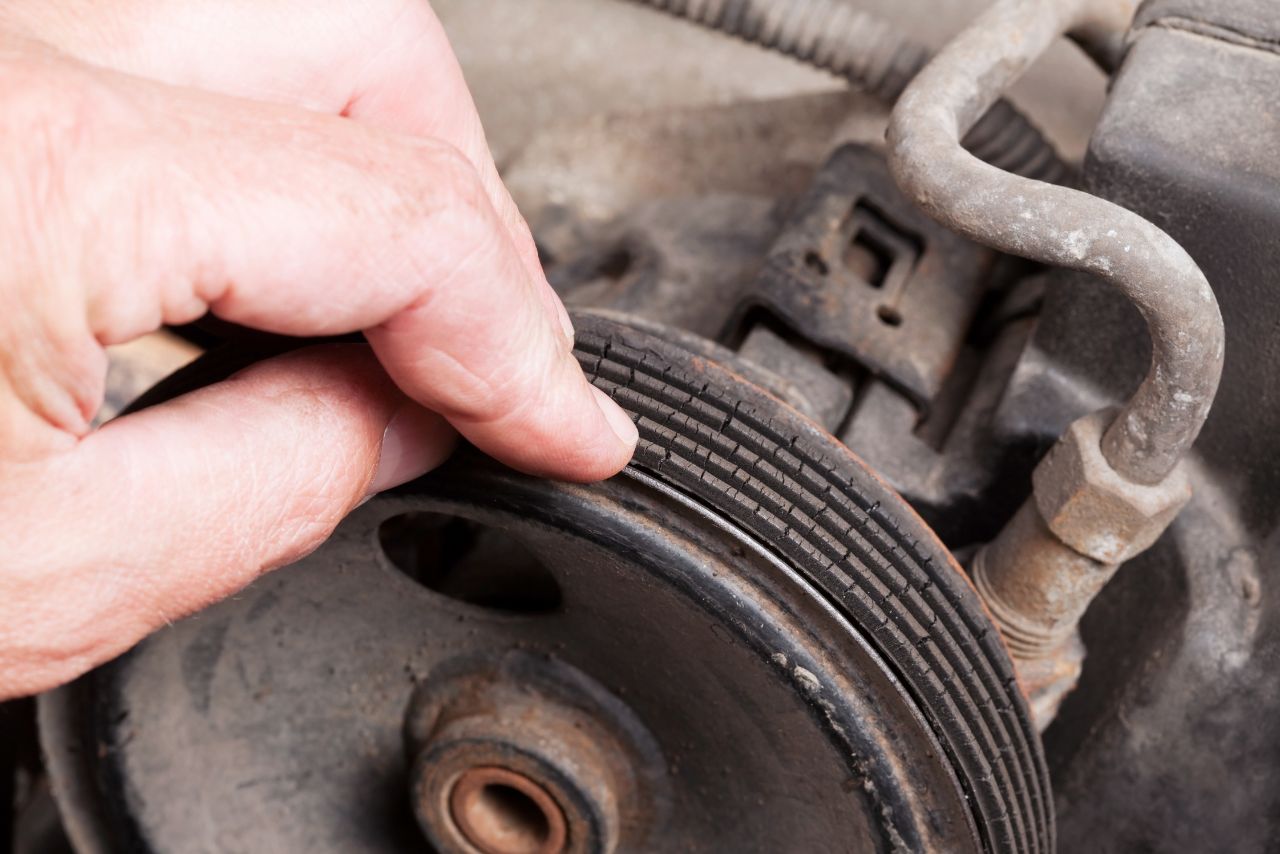

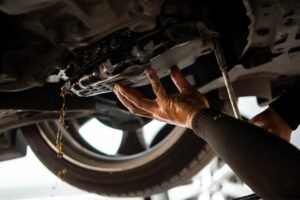

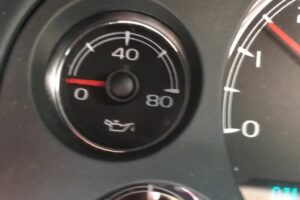

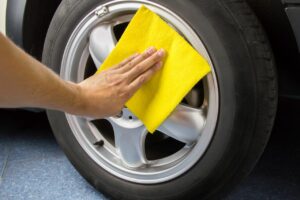

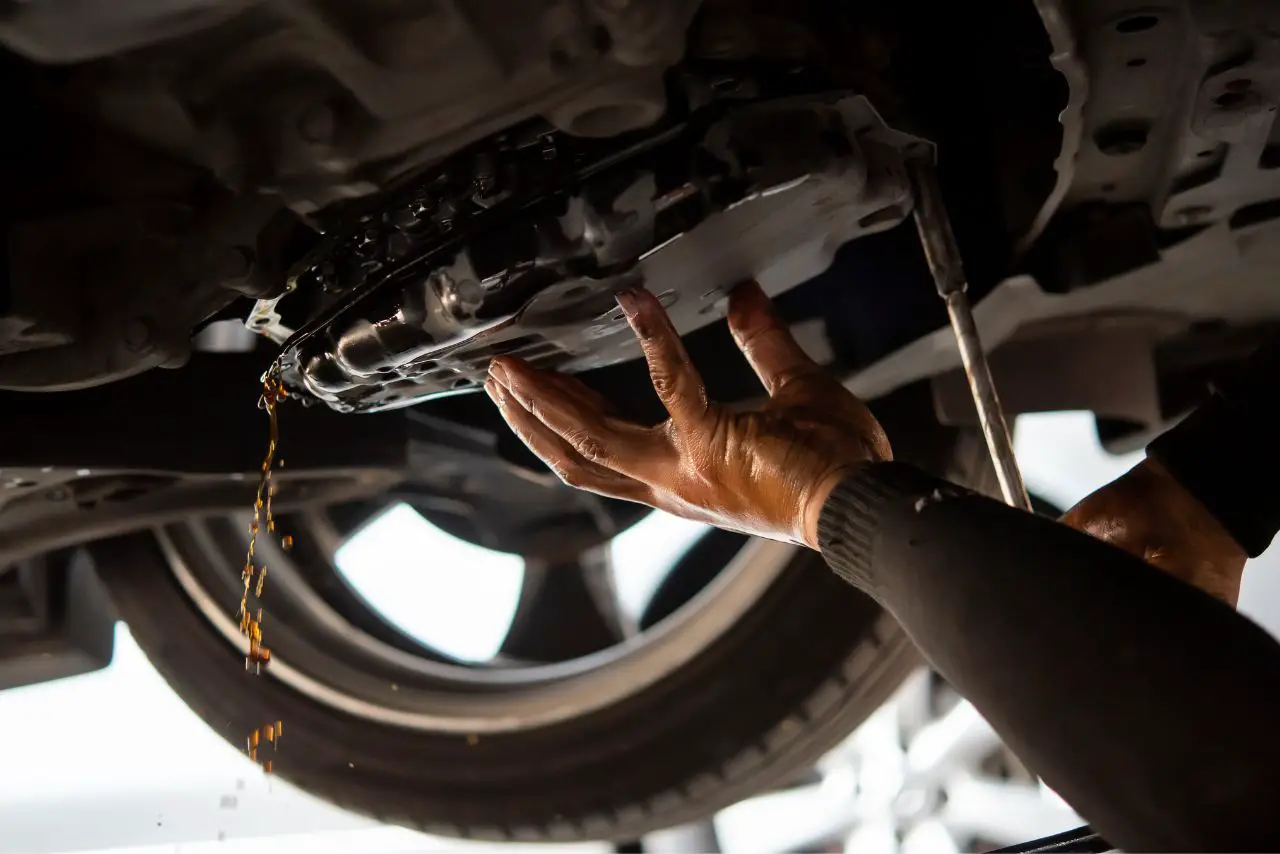


Leave a Reply